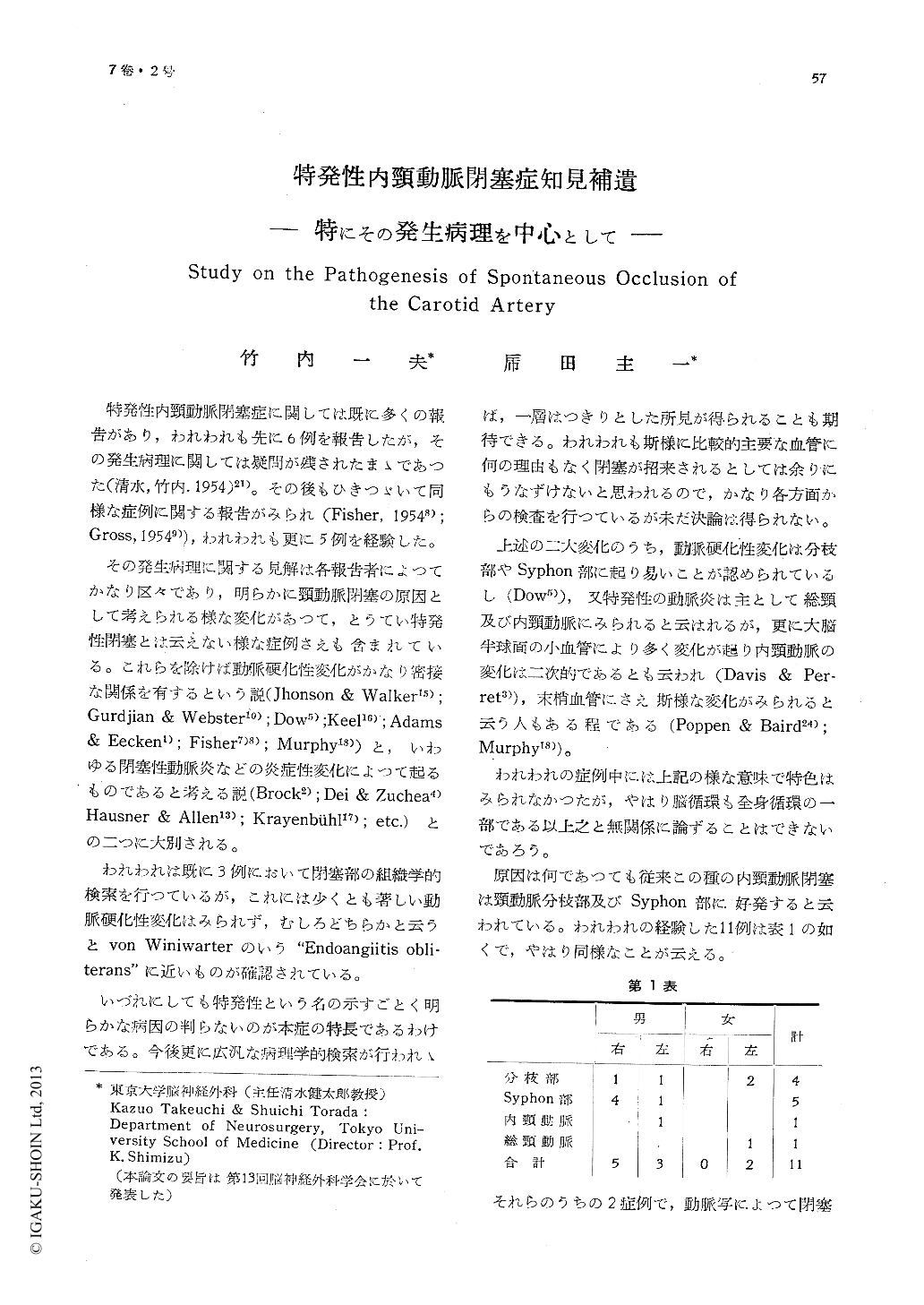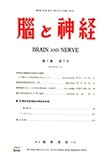Japanese
English
- 有料閲覧
- Abstract 文献概要
- 1ページ目 Look Inside
特発性内頸動脈閉塞症に関しては既に多くの報告があり,われわれも先に6例を報告したが,その発生病理に関しては疑問が残されたまゝであつた(清水,竹内.1954)21)。その後もひきつゞいて同様な症例に関する報告がみられ(Fisher, 19548); Gross, 19549)),われわれも更に5例を経験した。
その発生病理に関する見解は各報告者によつてかなり区々であり,明らかに頸動脈閉塞の原因として考えられる様な変化があつて,とうてい特発性閉塞とは云えない様な症例さえも含まれている。これらを除けば動脈硬化性変化がかなり密接な関係を有するという説(Jhonson & Walker15); Gurdjian & Webster10); Dow5); Keel16); Adams & Eecken1); Fisher7)8); Murphy18))と,いわゆる閉塞性動脈炎などの炎症性変化によつて起るものであると考える説(Brock2); Dei & Zuchea4)Hausner & Allen13); Krayenbühl17); etc.)との二つに大別される。
Though 6 cases of the spontaneous occlusion of the carotid artery were previously reported, its pathogenesis has remained obscure.
Unknown pathogenesis is one of the speciali-ties of the disease, but it might be rather close to" endoangitis obliterans" of von Winiwarter.
The occlusions are more frequently observed in the carotid bifurcation and the carotid syphon and the following table shows the results of series of occlusion cases.
Case A. Twenty-three-year old female, com-plaining chiefly of headache, tinnitus, blurring vision,etc. As brain tumor was suspected, left carotid arteriography was performed, which showed marked narrowing of the left internal carotid artery just distal to the bifur-cation. Moreover, only the origin of the middle cerebral artery can be seen in its intracranial portion. Follow-up arteriography which was performed fifty days after the previous exami-nation, showed complete occlusion of the internal carotid artery at the same portion of the narrowing.
Case B. Forty-one-year old male, complaining chiefly of left hemicrania, nausea, diplopia, ex-ophthalmus, etc. As brain tumor was also, suspected, left carotid arteriography was per-formed which showed irregular narrowing of the lumen of the carotid syphon. Stellate ganglion block and carbon dioxide-oxygen inhalation therapy were successfully applied. The carotid arteriogram which was obtained 7 months later, showed no progress of the narrowing.
As to the pathogenesis of this type of occlu-sion, the following findings were noted, i.e., arteriosclerotic change which frequently occurs in the bifurcation and syphon, retrograde deve-lopment of thrombus which causes carotid occlusion, and so forth. Although there were some differences between symptoms of each type of the occlusion cases, at least in 2 cases of our series the arteriographic changes men-tioned above show the progress of develop-ment of the occlusion. It is worthy of note that the occlusion may develop gradually like our cases.

Copyright © 1955, Igaku-Shoin Ltd. All rights reserved.


